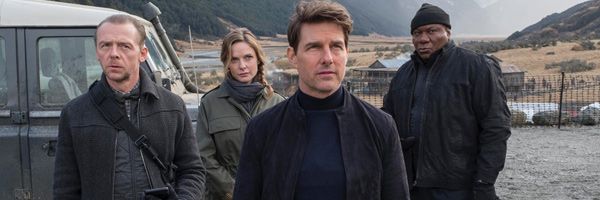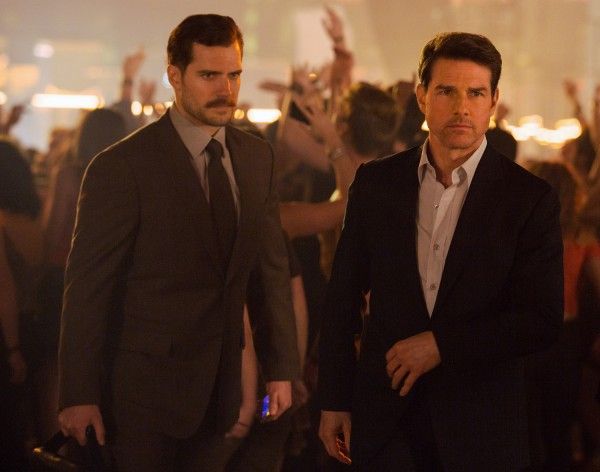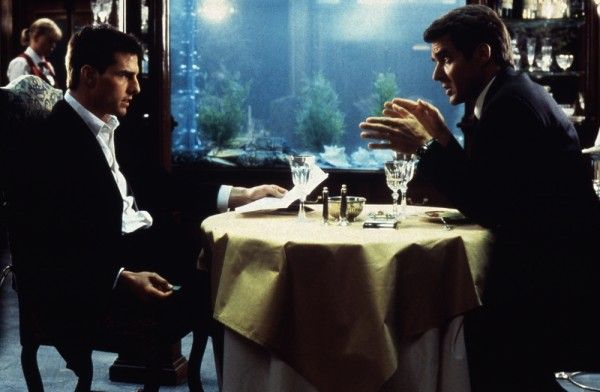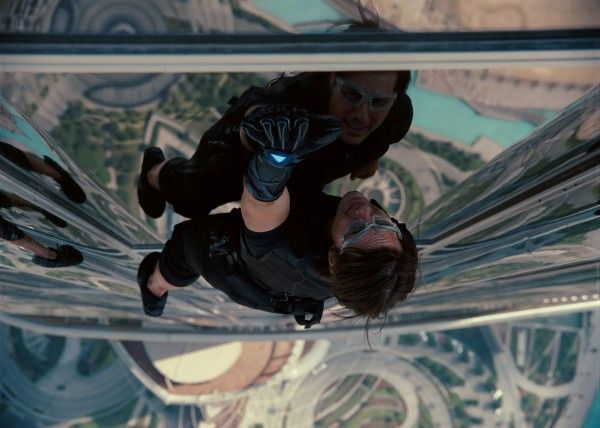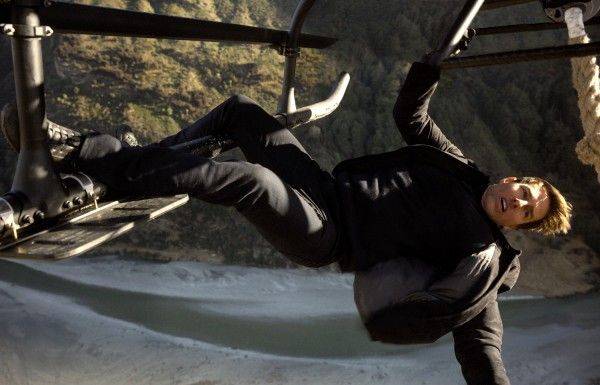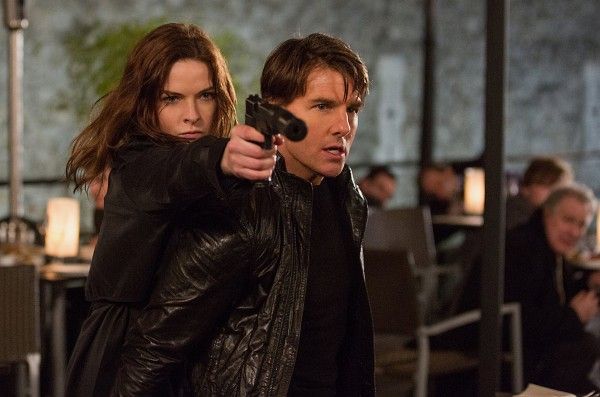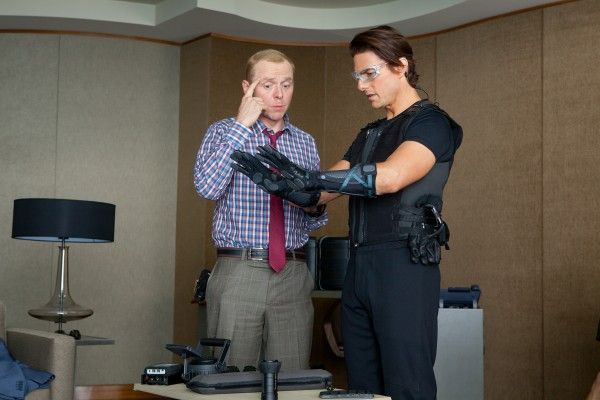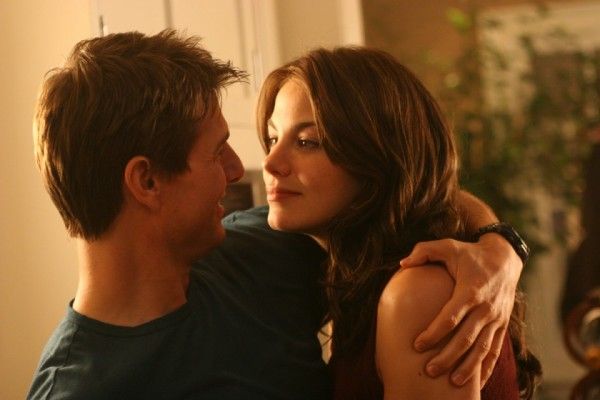It’s no secret that franchises rule the roost in Hollywood. Of 2018’s top 10 films at the box office, only two aren’t part of an existing franchise—and one of those two already has a sequel in the works. It makes sense. If a studio is going to spend $200 million on a movie, it’s a safer bet to put that money into a piece of IP that’s already proven popular with audiences rather than gamble on an original property. And as Hollywood has become more franchise-centric, filmmakers have gotten more ambitious within the constraints of their specific franchises. With Black Panther, Ryan Coogler made a film about isolationism and blackness; with Logan, James Mangold made a tough-as-nails drama about mortality; and with Skyfall, Sam Mendes took the risk of asking whether someone like James Bond fits into the post-9/11 era.
But while there are certainly exciting films being made in the realm of franchise filmmaking, one franchise in particular stands above the rest: Mission: Impossible. Pound for pound, the Mission: Impossible series is the best franchise currently running. Spanning 22 years, even its “worst” film has some fascinating merit, and beyond Mission: Impossible II, the other five Mission films are at least a triple, if not a home run.
Mission’s status as the King of Franchises was just solidified with Mission: Impossible – Fallout, the sixth and arguably best entry in the series thus far. Writer/director Christopher McQuarrie has crafted an action masterpiece that also miraculously breaks new ground as the film dives deep inside the mind of Ethan Hunt. For the first time, audiences get an emotional root for what makes Ethan tick, as McQuarrie positions Fallout as an emotionally intimate but also explosively epic affair.
But Fallout can’t take these leaps if the franchise isn’t already on a solid foundation, and indeed the roots of this series’ high quality date back to 1996’s Mission: Impossible. The first film was crafted by Tom Cruise himself, who made his producing debut in order to build up a franchise he could control. But instead of crafting some vain “Tom Cruise Showcase”, the actor/producer enlisted an auteur to take the helm of what was ultimately a team story.
Indeed, Mission: Impossible is unmistakably a Brian De Palma film. It doesn’t feel out of place in his oeuvre, and that set the stage for the subsequent filmmakers of the franchise to make each movie their own. While we can argue the quality of M:I II, it’s distinctly a John Woo film, and the radical departure in visual aesthetic and tone from De Palma’s film emboldened J.J. Abrams to make Mission: Impossible III a love story; it gave Brad Bird the license to stretch Ghost Protocol to Looney Tunes-like set pieces; and it allowed Christopher McQuarrie to embrace the elegance of Alfred Hitchcock for Rogue Nation.
Mission is a franchise that evolves with each film, but each evolution is rooted in purpose. The tone doesn’t change simply to make Mission look cool, or—and this is key—to make the franchise “fit with the times.” Unlike many other long-running franchises that have chased the trends of the day, the Mission series has consistently avoided looking or feeling like anything else. Tom Cruise isn’t interested in following trends to ensure the next Mission: Impossible movie is hip with whatever’s popular at any given moment. Ethan Hunt hasn’t magically become a superhero, and Mission hasn’t delved into the sci-fi aside from the fact that Tom Cruise doesn’t age. No, Cruise is interested in making the very best Mission: Impossible movie at any given time, and if that means hanging off the Burj Khalifa or jumping out of an airplane, so be it.
Which brings us to the stunts. Mission: Impossible is 22 years old. That’s a lifetime in Hollywood, and yet each film has managed to stand on its own footing when going toe to toe with whatever else is dominating the box office at that time. Stunts have always been a vital component of Mission, but Ghost Protocol took the idea of “action set piece” to the next level with the showstopping Burj Khalifa sequence. Now, we’ve seen action heroes hang off buildings in plenty of films, but what makes Ghost Protocol’s sequence so spectacular is the fact that Tom Cruise did that for real. We know there were wires and safety precautions, but Tom Cruise—one of the biggest movie stars in the world—literally stepped out of a window and scaled the tallest building in the world.
And as blockbusters have become more and more reliant on visual effects to give audiences spectacle, Mission has embraced the tactile quality of its set pieces, largely thanks to Cruise’s willingness to go the extra mile. Rogue Nation’s grounded nature and fleet-footed action felt distinctly different from 2015’s other blockbusters like Avengers: Age of Ultron and even Star Wars: The Force Awakens, just as Fallout really stands apart from the essentially animated Avengers: Infinity War and legitimately animated Ready Player One.
And while those CG-fests may top out at the box office at the end of every year, quality-wise Mission still has a leg up. The Fast & Furious franchise took five films to become a global mega-hit, and even then all the family posturing and never-ending runways in the world can’t hold a candle to the stakes and elegance of Mission. The James Bond series is older to be sure, but there are also admittedly quite a few stinkers in that franchise (including the most recent installment), bringing its average down. X-Men has Apocalypse, The Last Stand, and that dreadful X-Men Origins: Wolverine; Star Wars has the prequels (and your mileage may vary on Solo and Rogue One); Pirates of the Caribbean exhausted its characters and premise after three movies; and Jurassic Park probably never should’ve become a franchise in the first place.
In terms of average quality, Marvel Studios probably comes the closest, but even then it’s a little unfair to compare the two. The Marvel Cinematic Universe has churned out 20 films in 10 years with differing levels of connectedness, not to mention subpar entries like Thor: The Dark World. One could maybe make the argument that Bourne also comes close, but 2016’s disappointing fourth installment Jason Bourne sadly ruined that winning streak.
And then there's the fans. Toxicity in fandom has gotten out of control, from Star Wars to the ridiculous DC vs. Marvel battles, but Mission: Impossible fans seem to simply want to talk about how much they love these movies. There's no "correct" order in which to rank the Mission films, and the diversity of opinions on the matter is celebrated, not lambasted. It's a little thing, but the effusive positivity within the Mission: Impossible franchise's fan community does not go unnoticed.
Over the course of six films, Mission: Impossible has never felt like it was going through the motions. None of these movies come off as Cruise taking an easy paycheck or a director half-assing his job. Each film is a huge swing built on a desire to entertain at the highest level of quality possible, and more often than not that ball goes over the fence. Fallout seals the deal. Mission: Impossible is today’s best movie franchise, full stop.

